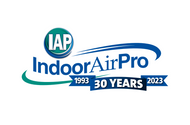Mold Testing And Remediation
Mold Testing and Remediation: Professional Mold Removal and Restoration Company
Mold is more than an unsightly nuisance; it poses serious health risks that can affect your home or business. Indoor Air Professionals recognize that effective mold removal and remediation is a detailed process that requires expertise. We are a leading mold removal and restoration company with extensive experience serving homeowners and commercial properties across Western New York.
Why Mold Removal Matters?
Mold can cause such health problems as asthma, irritation of the eyes, fever, wheezing, lung inflammation, and rashes on the skin. Such problems must be treated right away and properly. Doing the mold removal yourself may lead to incomplete remediation, leaving behind dangerous spores that threaten your health. Indoor Air Pro is a fully licensed, state-approved mold remediation specialist with an NYS License #00222. State law prescribes an initial assessment through an independent, licensed mold assessor to ensure a comprehensive, unbiased survey. Following this evaluation, a licensed mold remediation contractor must implement the Mold Remediation Work Plan, ensuring that every phase of the work is done correctly.
Mold Remediation Specialist: Mold Testing and Remediation Services
Indoor Air Pro approaches mold problems in a systematic, five-step approach:
Step 1: Preliminary Mold Evaluation
We start with a detailed inspection of any water intrusion and an initial assessment of mold contamination. We identify moisture corrections, clean-up strategies, and any need for further evaluation, including air or surface sampling. This foundational step sets the tone for the entire process.
Step 2: Extensive Investigation
Mold contamination is usually hidden; therefore, this stage is crucial. Our experienced personnel conduct an extensive investigation to determine the scope of the problem by using air and surface sampling to identify all affected areas and ensure no hidden threats remain.
Step 3: Scope of Work Development
We proceeded to create a remediation specific to the data collected. It involves addressing moisture intrusion, outlining areas for removal or cleaning, non-contaminated zone protection, and personal safety requirements. We aim for a clear road map for proper remediation.
Step 4: Microbial Abatement/Remediation
This is the implementation phase of the remediation plan prepared earlier. Our experienced team of local mold inspectors is committed to industry best practices, ensuring the highest mold remediation standards. We handle everything from treating contaminated materials to proper containment measures, specializing in professional black mold removal to ensure your environment is safe and healthy.
Step 5: Project Clearance
We finish our services by conducting a visual inspection and sampling to ensure that the remediation job is effective. Our commitment to excellence means that your space is mold-free and safe for you and your family.
Indoor Air Quality Monitoring
In addition to mold remediation, indoor air quality monitoring is now available with our Gray Wolf indoor air quality monitor. Our Gray Wolf indoor air quality monitor automatically logs readings every 15 minutes for parameters that include temperature, carbon dioxide, carbon monoxide, relative humidity, and total volatile organic compounds. Our diligently prepared reports reflect your indoor air quality and provide recommendations for improvement.
Indoor Air Professionals: Your Local Mold Inspectors
We never take chances when it comes to mold. Trust Indoor Air Pro, your dedicated mold removal and restoration company, to do the job for you. Our skilled mold remediation specialists and contractors are equipped to handle the toughest mold challenges efficiently. We pride ourselves on delivering effective turnkey solutions to ensure your home or business stays safe and healthy.
Suspicious of mold in your home? Act now. Schedule an inspection with our local mold inspectors today. Step into a mold-free environment and breathe easy once more with your health and safety in mind. Choose Indoor Air Pro for quality, reliability, and professionalism in mold testing and remediation services. We will handle the intricacies of mold removal so you can enjoy a safe and healthy space.



